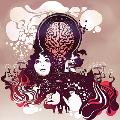
DMT-Nexus member

Posts: 2147 Joined: 09-May-2009 Last visit: 17-Nov-2025 Location: the shire, England
|
Study:Szabo, A., Kovacs, A., Riba, J., Djurovic, S., Eva Rajnavolgyi, E. & Frecska, E. (2016) The Endogenous Hallucinogen and Trace Amine N,N-Dimethyltryptamine (DMT) Displays Potent Protective Effects against Hypoxia via Sigma-1 Receptor Activation in Human Primary iPSC-Derived Cortical Neurons and Microglia-Like Immune Cells. Frontiers in Neuroscience, 10. http://journal.frontiers...89/fnins.2016.00423/fullArticle on research: http://beckleyfoundation...mune-cells-under-stress/ABSTRACTN,N-dimethyltryptamine (DMT) is a potent endogenous hallucinogen present in the brain of humans and other mammals. Despite extensive research, its physiological role remains largely unknown. Recently, DMT has been found to activate the sigma-1 receptor (Sig-1R), an intracellular chaperone fulfilling an interface role between the endoplasmic reticulum (ER) and mitochondria. It ensures the correct transmission of ER stress into the nucleus resulting in the enhanced production of antistress and antioxidant proteins. Due to this function, the activation of Sig-1R can mitigate the outcome of hypoxia or oxidative stress. In this paper we aimed to test the hypothesis that DMT plays a neuroprotective role in the brain by activating the Sig-1R. We tested whether DMT can mitigate hypoxic stress in in vitro cultured human cortical neurons (derived from induced pluripotent stem cells), and in monocyte-derived macrophages and dendritic cells. Here we report that DMT robustly increases the survival of these cell types in severe hypoxia (0.5% O2) through the Sig-1R. Furthermore, this phenomenon is associated with the decreased expression and function of the alpha subunit of the hypoxia-inducible factor 1 (HIF-1) suggesting that DMT-mediated Sig-1R activation may alleviate hypoxia-induced cellular stress and increase survival in a HIF-1-independent manner. Our results reveal a novel and important role of DMT in human cellular physiology. We postulate that this compound may be endogenously generated in situations of stress, ameliorating the adverse effects of hypoxic/ischemic insult to the brain.
|
|
|
|
|

DMT-Nexus member
Posts: 2151 Joined: 23-Nov-2012 Last visit: 07-Mar-2017
|
Hmm, I'm intrigued, but remain skeptical. DMT may have this effect, but that doesn't mean that this is the role that endogenous DMT plays. As far as I know, there's no evidence that the concentrations that they used are similar to endogenous levels, or that there's any sort of 'release' associated with hypoxic events. My caution would be thinking that these results translate into an explanation for endogenous DMT, which is a bit like saying: "I take epinepherine when I have an allergic reaction, so epinepherine's role must be to mediate immune response." Clearly epinepherine is a useful medication, but that doesn't mean that it's primary role in the body is immunological. Still though, good data. I wonder if Sig-1 ligands might one day be part of EMT jump kits for patients having hypoxic events. Blessings ~ND "There are many paths up the same mountain."
|
|
|

Communications-Security Analyst
Posts: 1280 Joined: 17-Aug-2014 Last visit: 27-Aug-2025 Location: Nirvana
|
It would be interesting if dmt was used similarly, or talked about. That would conflict with it being sched1 wouldnt it?
|
|
|

DMT-Nexus member
Posts: 2151 Joined: 23-Nov-2012 Last visit: 07-Mar-2017
|
I've got to say, I'm disappointed by the amount of interest this has generated. I feel like the interest in rigorous psychedelic science has kind of dried up on The Nexus. Blessings ~ND "There are many paths up the same mountain."
|
|
|

Hail the keys!
Posts: 553 Joined: 30-Aug-2014 Last visit: 07-Nov-2022
|
Nathanial.Dread wrote:I've got to say, I'm disappointed by the amount of interest this has generated. I feel like the interest in rigorous psychedelic science has kind of dried up on The Nexus. I find this very interesting, and I always endeavor to look through these posts when they seem understandable to me. But I am not a scientist, and I think a lot of Nexians (particularly newer ones) share this position. We need scientific research to help us prove the amazing effects of psychedelics that we know from anecdotal and empirical evidence, but a successful movement, just like a successful business, has many facets. We need philosophers to help us understand the point of anything we do here. We need social scientists and experts in humanities to navigate how psychedelics affect all different types of cultures. We need people who realistically understand governmental policy and law to help advocate for better penal and legal responses to drugs. And we need futurists to help direct the course of what psychedelics can do for humans and technology going forward. As for the post, it would be fascinating if the reason DMT could be released during near-death experiences is due to some major hormonal or neuronal malfunction/activation that causes hypoxia or a hypoxia-like state in the brain. It would be interesting, albeit difficult, to study exactly how the brain physically responds in the event of a near-death experience and see if DMT could fit in anywhere along that process - especially regarding it as protective of certain cells in extreme cases. "Think for yourself and question authority." - Leary
"To step out of ideology - it hurts. It's a painful experience. You must force yourself to do it." - Žižek
|
|
|

DMT-Nexus member
Posts: 14191 Joined: 19-Feb-2008 Last visit: 23-Oct-2025 Location: Jungle
|
Nathanial dread, one suggestion... Be patient. When you post something about how there is a lack of scientific interest, personally I feel it only reinforces a negative spiral. It has merely been 2 days since this thread was posted, not everyone checks the Nexus every single day. Also the Nexus has many ebbs and flows, if you've been here a while im sure you've seen that it's not a linear type of participation, there are moments with more of certain kinds of topics and posters, and then this has shifts. Give it some time. Back to the topic: Thanks for posting, Bancopuma  Frecska's presentation in the Breaking Convention was about this subject, his idea was not only to explain what is DMT's endogenous role but IIRC to possibly use DMT as emergency medications in the future. He has posted a few times in the Nexus, maybe he is still around wants to make some comments on it  Can anybody with enough knowledge on the subject comment on the concentrations used in this study versus concentrations found naturally in the human body?
|
|
|

DMT-Nexus member
Posts: 181 Joined: 31-Mar-2013 Last visit: 09-Mar-2024 Location: A lucky place
|
RAM wrote:[quote=Nathanial.Dread]
As for the post, it would be fascinating if the reason DMT could be released during near-death experiences is due to some major hormonal or neuronal malfunction/activation that causes hypoxia or a hypoxia-like state in the brain. It would be interesting, albeit difficult, to study exactly how the brain physically responds in the event of a near-death experience and see if DMT could fit in anywhere along that process - especially regarding it as protective of certain cells in extreme cases. It would be interesting to study this, but I don't think that near-death experiences have much to do with DMT. Although a near-death experience and a psychedelic DMT experience share some major features (ineffability, "feeling of a presence" (FOP), sense of mystical unity, etc.), the content of the two experiences is still very different. With NDEs subjects usually report a sense of familiarity, they claim to be visited by relatives or specific religious figures (consistent with their culture), and the sequence of events and their content seem to be relatively similar between subjects, following a certain common "narrative". DMT experiences on the other hand seem to be very different in-between subjects, they don't necessarily follow a specific sequence of events, and the landscapes and entities that are encountered are often extremely "alien" and "other-wordly". It's possible that the occurrence of an NDE is somewhat related to DMT, but I doubt that NDEs are actually triggered by an endogenous release of DMT or that the content of the experience is explained by the substance.
|
|
|

DMT-Nexus member
Posts: 2151 Joined: 23-Nov-2012 Last visit: 07-Mar-2017
|
endlessness wrote:Nathanial dread, one suggestion... Be patient. When you post something about how there is a lack of scientific interest, personally I feel it only reinforces a negative spiral. It has merely been 2 days since this thread was posted, not everyone checks the Nexus every single day. Also the Nexus has many ebbs and flows, if you've been here a while im sure you've seen that it's not a linear type of participation, there are moments with more of certain kinds of topics and posters, and then this has shifts. Give it some time. Back to the topic: Thanks for posting, Bancopuma  Frecska's presentation in the Breaking Convention was about this subject, his idea was not only to explain what is DMT's endogenous role but IIRC to possibly use DMT as emergency medications in the future. He has posted a few times in the Nexus, maybe he is still around wants to make some comments on it  Can anybody with enough knowledge on the subject comment on the concentrations used in this study versus concentrations found naturally in the human body? The n values are small, but Wiki has a list of levels of endogenous DMT in various bodily fluids in humans and rats. 160–540 ng/L in human urine (n=5) 15 ng/kg in human kidney (n = 1) 100,370 ng/L (n = 1); 2,330–7,210 ng/L (n = 3); 350 & 850 ng/L (n = 2) in human lumbar CSF (although I think there have been methadological critiques of these numbers). 50–790 ng/L (n = 20) in human blood For urine (the highest value) that comes out to be about 3 uM, which is within the range used. Someone might want to double check my math, it's back-of-the-envelope stuff. For blood it's about 4 uM. I'm looking at the figures and can't really tell if those low concentrations were significant or not. It's also 8:30am on a Saturday, so I'm not functioning on all cylinders. Blessings ~ND "There are many paths up the same mountain."
|